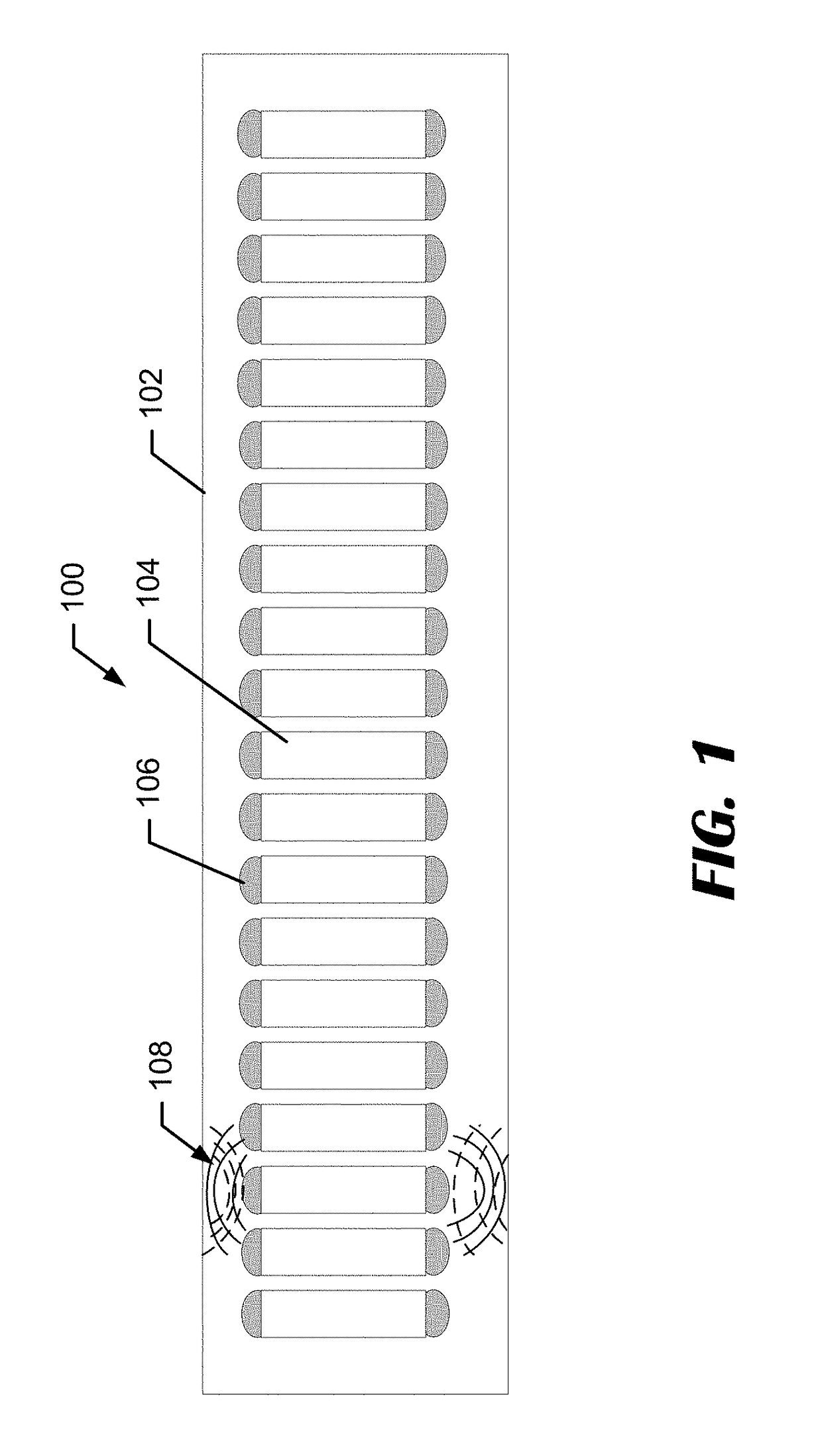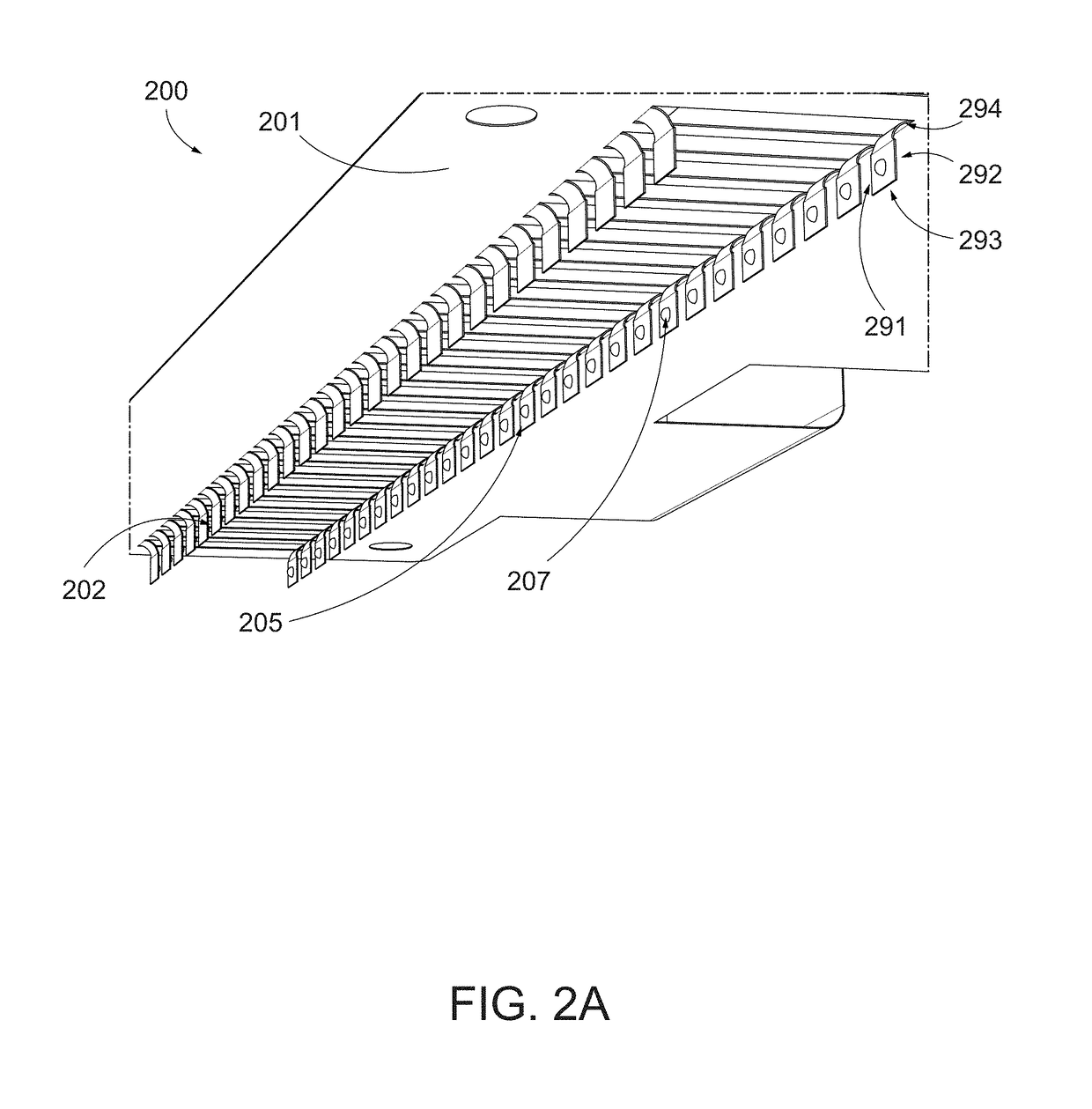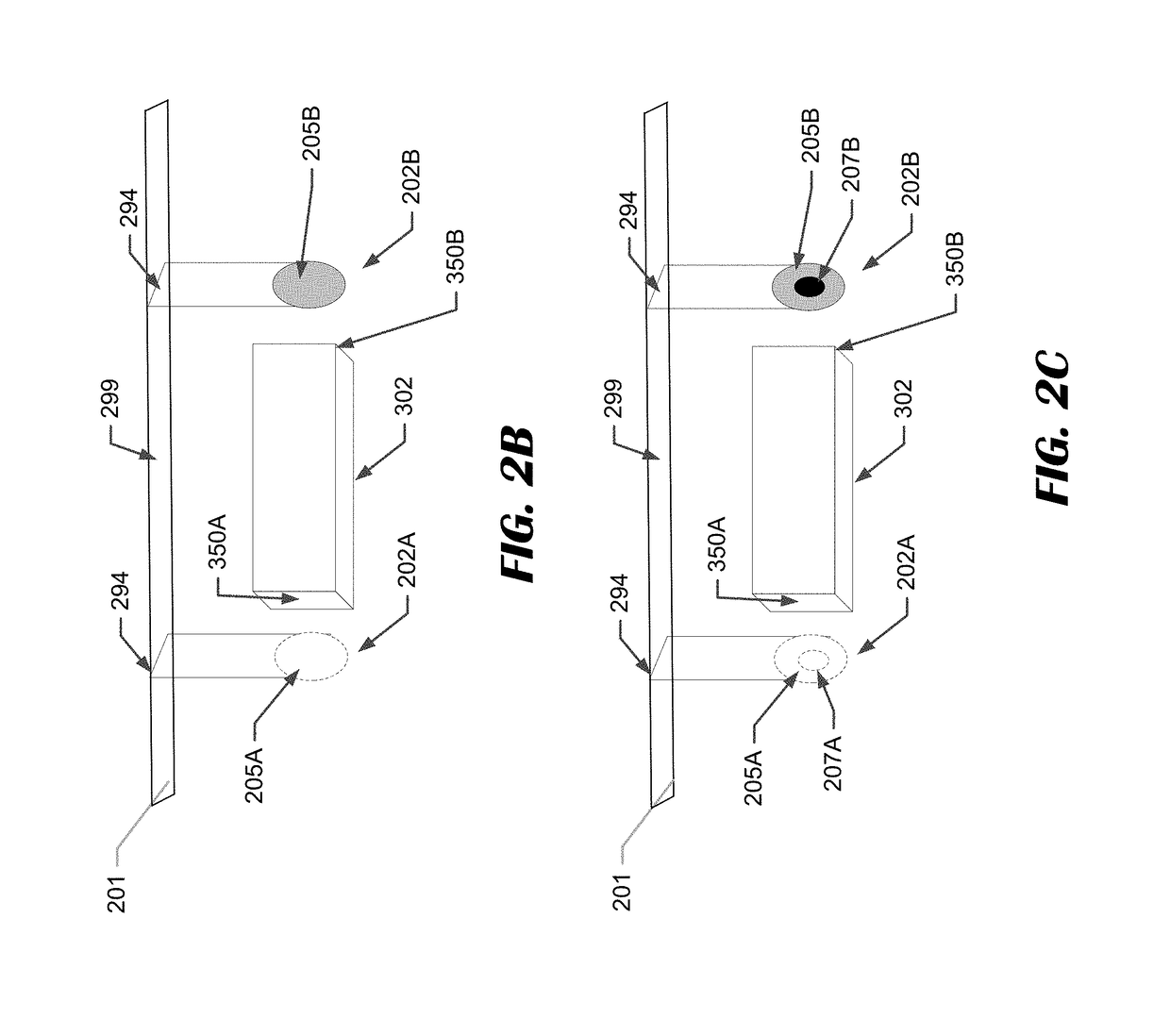Sonar transducer assembly having a printed circuit board with flexible element tabs
a technology of printed circuit board and sonar transducer, which is applied in the direction of sound producing devices, reradiation, acoustic wave reradiation, etc., can solve the problems of degrading sonar image, and achieve the effects of reducing the number of unfavorable signals
- Summary
- Abstract
- Description
- Claims
- Application Information
AI Technical Summary
Benefits of technology
Problems solved by technology
Method used
Image
Examples
Embodiment Construction
[0055]Exemplary embodiments of the present invention now will be described more fully hereinafter with reference to the accompanying drawings, in which some, but not all embodiments of the invention are shown. Indeed, the invention may be embodied in many different forms and should not be construed as limited to the exemplary embodiments set forth herein; rather, these embodiments are provided so that this disclosure will satisfy applicable legal requirements. Like reference numerals refer to like elements throughout.
[0056]FIG. 1 illustrates an example transducer assembly 100. The transducer assembly 100 may include a printed circuit board (PCB) 102 and a plurality of transducer elements 104 arranged in an array. Each of the transducer elements 104 may be a piezoelectric crystal that is surface mounted to the PCB 102. In some embodiments, each of the transducer elements 104 may be directly affixed to the PCB 102, such as by a solder joint 106. The transducer elements 104 may each ha...
PUM
 Login to View More
Login to View More Abstract
Description
Claims
Application Information
 Login to View More
Login to View More - R&D
- Intellectual Property
- Life Sciences
- Materials
- Tech Scout
- Unparalleled Data Quality
- Higher Quality Content
- 60% Fewer Hallucinations
Browse by: Latest US Patents, China's latest patents, Technical Efficacy Thesaurus, Application Domain, Technology Topic, Popular Technical Reports.
© 2025 PatSnap. All rights reserved.Legal|Privacy policy|Modern Slavery Act Transparency Statement|Sitemap|About US| Contact US: help@patsnap.com



